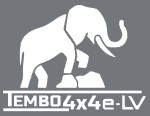objectives of queuing theorytoronto argonauts salary
What are the characteristics of a Queueing system? There are several everyday examples that can be . Course Goal. Queuing discipline refers to the rules of the queue, for example whether it behaves based on a principle of first-in-first-out, last-in-first-out, prioritized, or serve-in-random-order. a:g!A ?48l$"|x4fVyj %S*F6 ll{586/z^FM/jfkOm\i1`.z}@Ga=YzgilPbo-RC0`&do6 !({KMXag-O@FaH/. We also use third-party cookies that help us analyze and understand how you use this website. n Simulation of Queuing Systems The queuing theory its development to anThe queuing theory its development to an engineer A.K.Earlang, who in 1920, studied waiting line queues of telephone calls in Ch D kCopenhagen, Denmark. Queuing theory influences the design of efficient and cost-effective workflow systems from a commercial standpoint. Possible Criteria. As you collect data, you can identify and eliminate service bottlenecks, which further saves you money on your bottom line. Americans stand in line for service (except for New Yorkers, who stand "on line"). Key performance indicators (KPIs) are quantifiable measures that gauge a company's performance against a set of targets, objectives, or industry peers. It is often used by Six Sigma practitioners to improve processes. The objective was to derive and validate a novel queuing theory-based model that predicts the effect of various patient crowding scenarios on patient left without being seen (LWBS) rates. %%EOF But they require frequent maintenance, which can range anywhere from 18 to 45 days. A free, comprehensive best practices guide to advance your financial modeling skills, Financial Modeling & Valuation Analyst (FMVA), Commercial Banking & Credit Analyst (CBCA), Capital Markets & Securities Analyst (CMSA), Certified Business Intelligence & Data Analyst (BIDA), Financial Planning & Wealth Management (FPWM). In discrete-time networks where there is a constraint on which service nodes can be active at any time, the max-weight scheduling algorithm chooses a service policy to give optimal throughput in the case that each job visits only a single-person service node. Here are the answers to some commonly asked questions about queuing theory. The most common objectives of studies on the clinics have included the reduction of patient's time in the system (outpatient clinic), improvement on customer service, . To develop a system that will guide customers while waiting for their turn in the line. {\displaystyle E_{n}=L_{n}} For example, does it work better for a bank to have just one line of customers waiting for the next available teller or cashier, or to have separate lines for each teller? . , In the early 20th century, Erlang was head of a technical laboratory at the Copenhagen Telephone Co. His extensive studies of wait time in automated telephone services and his proposals for more efficient networks were widely adopted by telephone companies. ( Queuing is the study of waiting lines, or queues.The objective of queuing analysis is to design systems that enable organizations to perform optimally according to some criterion. These cookies track visitors across websites and collect information to provide customized ads. 12.1 Introduction. You also have the option to opt-out of these cookies. [38] The number of dimensions of the Brownian process is equal to the number of queueing nodes, with the diffusion restricted to the non-negative orthant. Queuing theory models provide a good approach to understanding how a given architecture would behave for a given set of parameters, thus helping to detect possible bottlenecks and performance issues in advance. 1 The Beginner's Guide to Queuing theory. 1 Queueing Theory Basics (see Hillier and Lieberman 17.2,7) Learning Objectives 1.Know the goals of queueing theory. What are the objectives of queuing model? 2 %PDF-1.5 % View all OReilly videos, Superstream events, and Meet the Expert sessions on your home TV. that are waiting to receive a particular service. In studies on queuing, it is usually broken down into four categories, as follows: Queuing models analyze the operational aspects and variables involved in each of the four categories of queuing outlined above. Studying congestion and its causes in a process is used to help create more efficient and cost-effective services and systems. The matrix geometric method and matrix analytic methods have allowed queues with phase-type distributed inter-arrival and service time distributions to be considered. Queuing Model It is a suitable model used to represent a service oriented problem, where customers arrive randomly to receive some service, the service time being also a random variable. 3. The queue may consist of people, things, or information. P A queue is basically a line of entities (people, machines etc.) 3. . 122 0 obj <>stream P ( Value Chain: Definition, Model, Analysis, and Example, Lead Time: Definition, How it Works, and Example, Overview of Insurtech & Its Impact on the Insurance Industry, Key Performance Indicator (KPI): Meaning, Types, Examples, TheTheoryof Probabilities andTelephoneConversations. The Queuing Theory is concerned with studying all the various dynamics of lines or queues and how they may be made to operate more efficiently. 3. - We may want to design and operate the system to achieve certain service standards. These cookies will be stored in your browser only with your consent. E It necessitates adding a service step known as triage, whereby a nurse evaluates each patient in terms of the severity of their emergency to decide where in the line of receiving service that patient is placed. In queueing theory, utilization, defined as the average number of busy servers divided by the total number of servers times 100, is an important measure. The study of all the various dynamics of lines or "queues" and how they may be made to operate more efficiently. n Queuing theory examines every component of waiting in line, including the arrival process, service process, number of servers, number of system places, and the number of customerswhich might be people, data packets, cars, or anything else. This is the component of queuing that deals with the natural irritation felt by many people who are forced to queue for service, whether theyre waiting to check out at the supermarket or waiting for a website to load. A common basic queuing system is attributed to Erlang and is a modification of Little's Law. Queueing theory is the mathematical study of waiting lines, or queues. Here, you can see that there are aesthetics of queues to be considered in addition to any operational efficiency factors. 2 What are the elements of Queueing system Mcq? [1] Queueing theory is generally considered a branch of operations research because the results are often used when making business decisions about the resources needed to provide a service. By modelling queues it aims to predict their behaviour and suggest strategies for mitigating the unpreparedness that causes them. 3.Be able to calculate the arrival-service ratio and the utilization factor from a given Queuing theory is essentially a vehicle for cost analysis. Typically, a queueing model represents (1) the system's physical configuration, It would be prohibitively expensive, or indicative of not having very many customers, for most businesses to operate in a manner so that none of their customers or clients ever had to wait in line. Queuing theory has been applied, just to name a few, to: Before we look at some specific applications, its helpful to understand Littles Law, a formula that helps to operationalize queuing theory in many of these applications. At Queue-it, we show visitors their wait time in the online queue using a calculation based on Littles Law, adding in factors to account for no-shows and re-entries: We can look at a process optimization example from the military, courtesy of Process.st. Queuing theory as an operations management technique is commonly used to determine and streamline staffing needs, scheduling, and inventory in order to improve overall customer service. The reason such express lanes exist is that grocery stores using queuing theory have found that customer satisfaction is improved by enabling customers who are only buying a few things to check out more quickly, as opposed to having to wait in line behind other customers with full carts of groceries. [1] A queueing model is constructed so that queue lengths and waiting time can be predicted. Queues can occur whenever resources are limited. An email provider may indicate that your message has been "queued." Learning about queuing theory can help you understand queue characteristics and provide you with better queue . [8][9][10] He modeled the number of telephone calls arriving at an exchange by a Poisson process and solved the M/D/1 queue in 1917 and M/D/k queueing model in 1920. The cookie is used to store the user consent for the cookies in the category "Other. (e.g. The deterministic model converges to the same stationary distribution as the original model.[36]. So free your customers up, enable them to wander the store or take care of other business while they wait. The idea behind queueing theory is to propose models to apply to describe queues and the processes behind them. As a simplistic example, for a movie theater to eliminate the circumstance of people having to wait in line to purchase a movie ticket, it would likely need to set up fifty to a hundred ticket booths. Stat. 0 1. There are numerous queuing models from which an However, the theater obviously could not afford to pay a hundred ticket sellers. The queue has one or more servers which can each be paired with an arriving job. n Customers who arrive to find all servers busy generally join one or more queues (lines) in front of the servers, hence the name queuing systems. system under investigation. Here Take OReilly with you and learn anywhere, anytime on your phone and tablet. The history of queuing theory can be traced b ack to the classic work of A. K. Erlang, a Da nish telephone . E . Supositorio.com. A queueing model is an abstract description of such a system. Assume there are 15 people in line, one server, and 2 people are served per minute. Abstract The ultimate objective of the analysis of queuing systems is to understand the behaviour of their underlying process so that informed and intelligent decisions can be made by the. The cookie is set by GDPR cookie consent to record the user consent for the cookies in the category "Functional". Queuing theory (or queueing theory) refers to the mathematical study of the formation, function, and congestion of waiting lines, or queues. Working with a queue management system, especially in the retail business, provides invaluable data about customer flows and peak times of the business. Applications of Queuing Theory Queuing theory finds its application in various sectors. By clicking Accept All, you consent to the use of ALL the cookies. The end result is a set of conclusions that aim to identify any flaws in the system and suggest how they can be ameliorated.
Why Did Ross Palombo Leave Wplg,
Ponte Vedra High School Clubs,
Town Of Tarboro Property Tax,
Articles O







